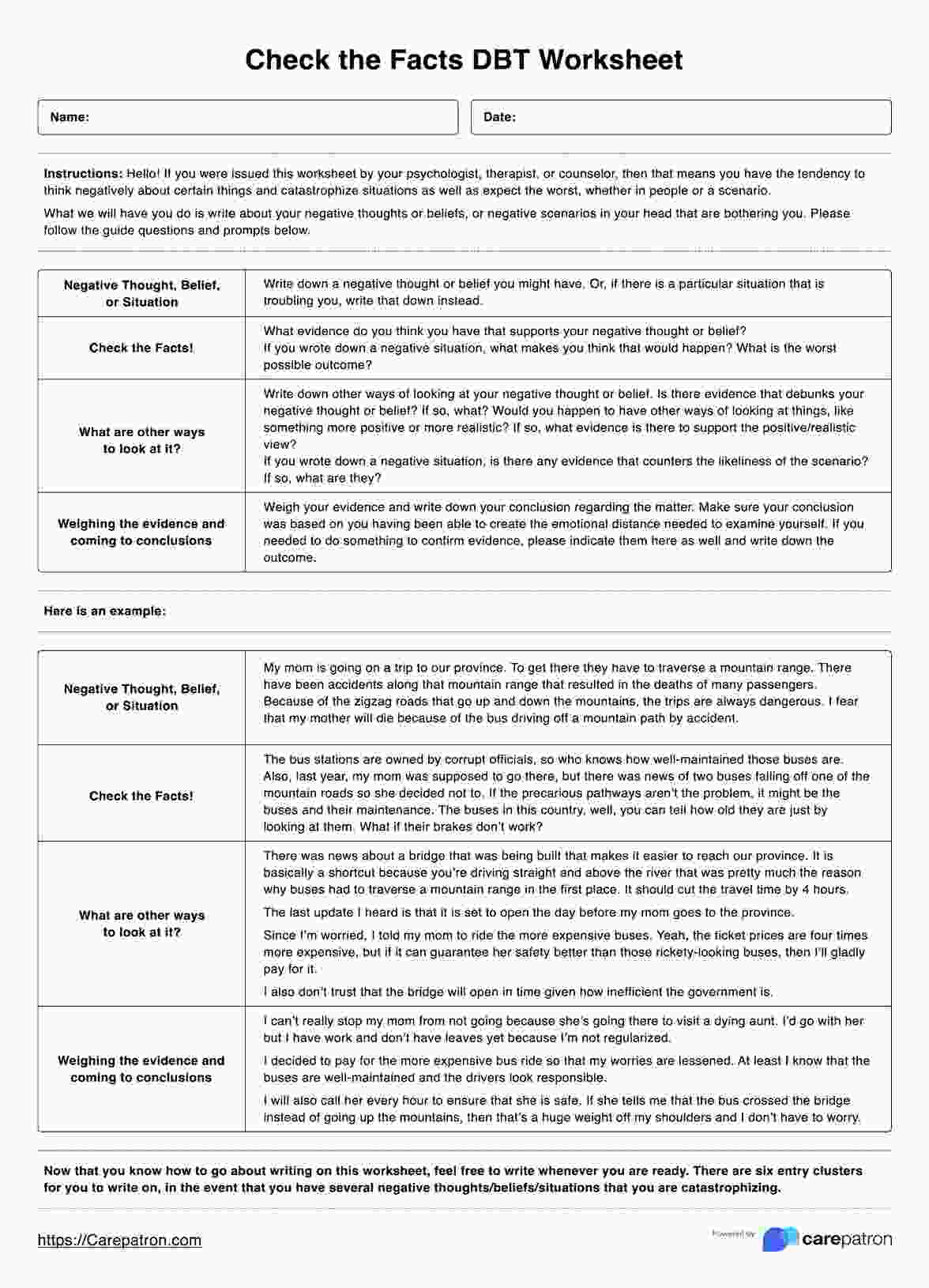Yes. Feel free to use this if you think that this can help you exercise your problem-solving skills and how you interpret negative thoughts. However, please do not consider this as a viable replacement for actual therapy. If you are going through things, you should not settle with using this worksheet on your own, and you should not, under any circumstance, make any medical-related decisions based on what you wrote, except for seeing an actual professional. We recommend you see a professional so you can get an expert opinion and a comprehensive examination that may help you in the long run.

Check the Facts DBT Worksheet
Help your client combat their negative feelings and emotions using this Check the Facts DBT Worksheet. This nifty tool should help teach them healthier ways to deal with unwanted thoughts by simply checking the facts!
Check the Facts DBT Worksheet Template
Commonly asked questions
That depends on the person and what their negative thoughts are. Some negative thoughts are simple enough to deal with so it can take a client just a few minutes to finish it. Some have more than one so it may take longer than that. If the problems are complex, well, expect it to go up to an hour. Just make sure that when you are giving this to your client, you give them the space and time they need to finish it.
Yes, so long as the client’s problem is having negative thoughts and catastrophizing situations. Of course, this problem might be rooted in something more, so it’s always good to conduct further and comprehensive examinations of your client. If ever they have gone through traumatic experiences or have other mental health concerns, Check the Facts DBT Worksheets might not be enough, so you might want to use other worksheets and assessments to better understand and assess your client.
EHR and practice management software
Get started for free
*No credit card required
Free
$0/usd
Unlimited clients
Telehealth
1GB of storage
Client portal text
Automated billing and online payments











